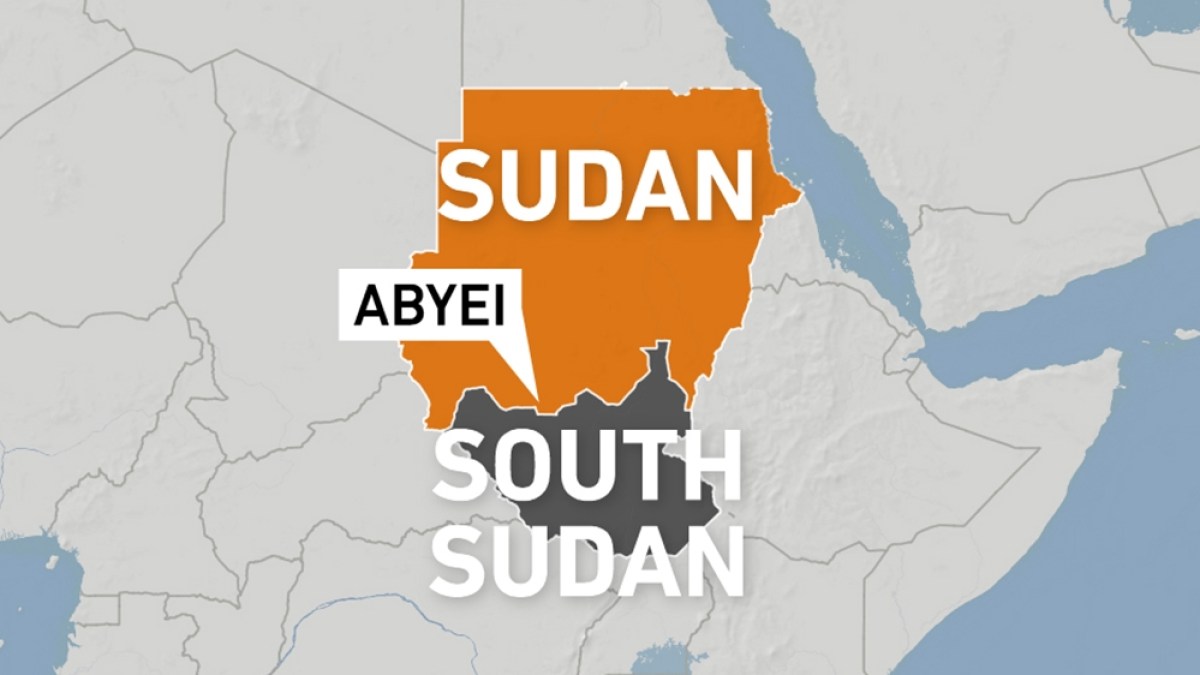Cairo, Egypt – When Ahmed Ginah first left his village in Egypt’s northern delta for the Tanzanian capital in 2017, it was with little more than a dream. Four years later, he named his company after that dream.
“When I first came to Tanzania at 28, no one imagined why I would head south,” Ginah, who is lightheartedly called the “Mayor of Egyptians in Dar-es-Salaam”, told Al Jazeera, saying that in the minds of many of his friends and family back home, countries in sub-Saharan Africa are tainted by stereotypes of famine, poverty and disease.
But when Ginah arrived, what he found were opportunities – and a chance to build something new.
“In 2021, I established my company, Dream [Trading],” he said, in recognition of his “dream” to be a success. He set it up with savings of $3,000, tapping into a growing market importing and exporting aluminium household goods. As the years progressed, he expanded into the steel business.
But beyond work, the 36-year-old is also somewhat of a benevolent godfather figure for other North African migrants making the journey southward.
Ginah has a standard daily routine. Every morning, his driver, Hamed, drops him off at the household goods warehouses attached to Dream Trading. A while later, he drives him to City Mall, the most popular shopping centre in Dar es Salam’s Kariakoo neighbourhood.
Ginah is a regular at the Somali cafe there, where he sits until about noon, meeting other Egyptians and Tanzanians, often over a breakfast of mandazi – deep-fried dough fritters dusted with powdered sugar – or a chipsi mayai, a popular street food omelette with French fries, tomato sauce and vegetables.
Typically, Egyptians who move to Tanzania already have a relative or friend living there. For those who don’t, Ginah helps them find a place to stay, sometimes offering them a job at Dream and helping cover their rent if they’re an employee. He also introduces them to the work system in Tanzania, and gives them a lay of the land about cities where they can potentially work.
“However, the most important thing I provide,” said Ginah, “is a trusted, guaranteed translator.” In urban centres in Tanzania, people speak English. But many village residents only speak Swahili. This could lead to misunderstandings and expose newcomers to “fraud or scams”, Ginah said, so he lends a helping hand.
 Ahmed Ginah, right, and two Egyptians recently arrived in Tanzania [Egab]
Ahmed Ginah, right, and two Egyptians recently arrived in Tanzania [Egab]But Ginah is determined to help only those who want to help themselves.
“I help those who come to work, not those who lie on their laurels and delegate the work to the translator or others,” he said. “In such cases, I advise the person that this country has a lot to offer, but it doesn’t give to the lazy or dependent.”
Ginah has gained a lot in eight years. Today, his company distributes products throughout Africa, and he has helped dozens of young men from his home village relocate and establish themselves in Tanzania, where an estimated 70,000 Arabs live – including 1,200 Egyptians, according to figures provided by Egypt’s ambassador to the country, Sherif Ismail, in 2023.
South-south migration
While Europe fortifies its borders against North African migrants, ambitious young Egyptians in a struggling economy are looking for alternatives to emigrating to the West, according to Ayman Zohry, a demographer and expert on migration studies at the American University in Cairo.
This south-bound migration has accelerated significantly in recent years.
Official statistics show the number of Egyptians in non-Arab African countries increased from 46,000 in 2017 to 54,000 by 2021.
This trend stands in stark contrast to the perilous journeys many Egyptians still make across the Mediterranean. In 2023, Egyptians represented more than 7 percent of all arrivals in Italy along the Central Mediterranean route, making them the fifth most common nationality, according to a report by the Mixed Migration Centre.
The European Union recently responded with a new 7.4 billion euro ($8.7bn) agreement with Egypt, partly aimed at boosting border controls to reduce irregular migration to Europe.
Zohry explained that Egypt’s youth migration trends are undergoing a notable transformation.
“While traditional destinations were the Gulf and Europe, there is a new trend towards the south, specifically some African countries,” Zohry told Al Jazeera.
“Economic migration” sees young people seeking investment opportunities in emerging and promising markets. “This trend has grown in tandem with the expansion of the Egyptian government’s diplomatic and commercial relations with several African countries.”
However, Zohry said, migration to Africa is often circular or temporary. “This means that the migrant returns to Egypt after a short period, or moves between several countries according to available opportunities.”
 Dar-es-Salaam, Tanzania [File: Andrew Emmanuel/Reuters]
Dar-es-Salaam, Tanzania [File: Andrew Emmanuel/Reuters]The back-and-forth flow is evident every Friday night in Dar-es-Salaam, as an aeroplane takes off from Julius Nyerere airport, heading to Cairo.
During high seasons like Eid al-Adha or Eid al-Fitr, whole families fill the departure gates, as Egyptians take their earnings home to visit family, contribute to building a new home, prepare a family member for marriage, or help their parents fulfil a dream of performing the Hajj pilgrimage.
‘Open to Egyptian skills’
Across the African continent, diaspora communities of Arabs and North Africans are growing.
South Africa accounts for the highest percentage of Egyptian residents in Africa, accounting for 85 percent, followed by Nigeria, Kenya and Senegal.
Ginah recounts a story from the late 1990s which has since become an urban legend among youth seeking greener pastures in Africa.
“A young man went to South Africa on vacation to visit a friend. Bizarrely, he was arrested in Cape Town for a visa irregularity,” said Ginah. “When he was released, he was broke. All he had were some aluminium utensils, so he sold them to make enough money to buy a ticket home.”
That’s when the word got out, he says, and people discovered the huge demand for Egyptian aluminium household goods. Young people realised they could make money – and that’s how the home appliance and home goods trade between Egypt and other African countries picked up. Since then, Egyptian business interests across the continent have diversified to include manufacturing, agricultural processing, and mining.
Although North Africans have long travelled south, the trend surged following the 2011 mass uprisings in Egypt and the ensuing political, economic and social change, Ginah says.
“There was a new wave of emigration within Africa – both [to] South Africa and other countries in sub-Saharan Africa – as the Gulf and Libya were greatly affected by the political turmoil.”
 Egyptian President Abdel Fattah al-Sisi walks past a guard of honour at the Julius Nyerere International Airport in Dar-es-Salaam [File: Emmanuel Herman/Reuters]
Egyptian President Abdel Fattah al-Sisi walks past a guard of honour at the Julius Nyerere International Airport in Dar-es-Salaam [File: Emmanuel Herman/Reuters]Locally, migrants have also found a more friendly working environment, many say.
The government of Tanzania has made strides to support entrepreneurship and foreign investment. According to Lloyds Bank country profile, foreign investors can benefit from many fiscal and non-fiscal incentives.
“Tanzania has natural resources and significant investment opportunities,” said Makame Iddi Makame, the commissioner general and chief of staff at the Tanzanian embassy in Cairo.
He said the country established the Tanzania Investment Centre to manage investment affairs. This includes reducing customs duties to 5 percent in priority sectors and 0 percent in leading sectors; providing tax exemption on mining, agricultural, and industrial inputs; facilitating the issuance of residence, work and business permits, and the repatriation of capital gains abroad; and deferring taxes and VAT for loss-making projects for up to five years.
The country’s political stability also provides a high degree of investment security, as there is low inflation (4.2 percent) and stable exchange rates, he added.
“Given the limited opportunities within Egypt, some African countries may appear less competitive but are more open to Egyptian skills in sectors like construction, agriculture, education, and information technology,” according to migration expert Zohry.
Yet, despite the potential opportunities and generally more welcoming atmosphere, migration to African countries is still limited, compared with the Gulf and Europe, he added, due to a stigmatised mental image many North Africans have about the rest of the continent.
However, there are signs the continent may become a gradual alternative for some youth seeking opportunities beyond traditional borders.
Some 550km (340 miles) southeast of Dar-es-Salaam is Mayan village.
There, Mohamed el-Shafie, 34, another Egyptian, built two cashew-processing factories in the Mtwara region in 2018, tapping into a strategic crop that accounts for 10-15 percent of Tanzania’s foreign exchange earnings.
“Cashew sales are built purely on trust,” el-Shafei told Al Jazeera. “The cashew growing and harvesting operation is meticulous and requires sensitive handling by farm workers to produce a pure cashew nut. This is followed by the ‘processing’ stage to prepare it for export in good condition.”
Tanzania is one of Africa’s leading producers and exporters of cashew nuts, ranking among the top three on the continent and eighth globally.
 Workers at Mohamad El-Shafei’s cashew processing factory, Mayan Village, Mtwara region, Tanzania [Egab]
Workers at Mohamad El-Shafei’s cashew processing factory, Mayan Village, Mtwara region, Tanzania [Egab]El-Shafei’s company has customers across the Arab world and Turkiye, and employs some 400 Egyptian, Chinese and Tanzanian workers, besides the seasonal labourers hired during the cashew harvest season in October.
His foray into the cashew industry was accidental, said el-Shafei, who studied Chinese as an undergraduate at Cairo University, before moving to Beijing to continue his education.
“At the time, I had a lot of Vietnamese friends who worked in the cashew industry. That was when I learned that Tanzania had a promising business opportunity and that Chinese equipment specialised in cashew crop processing was a gap that I could fill,” he said.
With a little help from his friends, he connected with cashew farmers in Tanzania in late 2017, and with a small capital investment of 200,000 Egyptian pounds (about $11,000 back then), el-Shafei set up shop and imported two cashew processing machines from China to start the business. In 2023-2024, Elshafei Investment Limited had made 13 export shipments with a total value of approximately $719,700.
El-Shafei decided to relocate his small family to Dar-es-Salaam so his young children would not be far from him. Today, they all live amid the Arab and Egyptian community, as well as Tanzanians of Yemeni, Omani, and Iranian origin who moved there during the Arab rule before the 1964 Zanzibar Revolution.
Egyptians in Tanzania are not isolated from the local population, el-Shafei says.
“We share celebrations and holidays such as the July 7 Saba Saba Day, which marks the founding of the Tanganyika African National Union (TANU) in 1954, a significant step towards independence and nation-building. We also celebrate Swahili Language Day and Eid al-Adha through communal meals held in cashew farm villages,” he says.
For Ginah, living in Dar-es-Salaam with his wife and children, Egyptians are part of the fabric of their new community.
“We maintain good relationships with Tanzanians, and we share friendships,” he said, including meeting at work, mosques and social clubs.
But amid the successes, there are also difficult moments in living far from home, he said.
“The pain of alienation hits hardest when someone dies. We [Egyptian immigrants] know each other well, whether in East or West African countries, so it’s very difficult. We immediately band together to make arrangements for the body to be repatriated, and we support the family financially and emotionally, whether they remain in Tanzania or return home to Egypt.”
But when there is family by your side, “the feeling of alienation disappears,” Ginah said. And thanks to technology, “we can see family and friends on a daily basis on mobile phone calls.”
Ginah feels Tanzania is the country where he was destined to make his living.
“It has certainly become a second home for me, where my children are growing up,” he said. “When will I return to my homeland, I don’t know.”
This piece was published in collaboration with Egab.

 3 months ago
111
3 months ago
111

















































